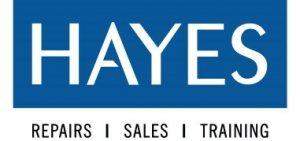Adhering to Dental OSHA Guidelines on Bloodborne Pathogens | Hayes Handpiece Info
Transmissions of blood-borne pathogens (BBPs) in dental health must be taken seriously. BBPs of primary concern include HBV, HCV, HIV which was introduced to the population through infected intravenous drug users during the late 1970s.
Workers who are exposed to bloodborne pathogens could be at risk for serious or life-threatening illnesses. Fortunately, OSHA has strict guidelines that help reduce the risks of being infected with a virus like HIV by following basic safety procedures and wearing appropriate personal protective gear when working in high-risk areas where contact is likely.
In general, the OSHA standard in handling bloodborne pathogens require dental employers to:
Establish a Bloodborne Pathogen Exposure Plan
The exposure control plan is a written document that dental clinics must provide to all their workers. This contains lists of job classifications in which all employees have occupational exposures along with tasks and procedures performed by those who are exposed.
Exposure Control Plan Annual Update
It is important that dental offices update the plan every year because tasks, procedures and positions may change which could alter occupational exposure. Dental clinics must also document if they have considered using safer medical devices in order to reduce or eliminate any risk of potential injury.
Dental employers must also document that they have solicited feedback from frontline workers in identifying, evaluating, and selecting effective engineering and work practice controls.
Enforce Universal Precautions
There are a few ways that you can protect yourself and your dental staff from getting sick. One of them is by using universal precautions, which means always treating any human blood and other bodily fluids as if they were infectious for the purposes of preventing exposure to pathogens such as HIV or hepatitis B.
Identify and Use of Dental Engineering Controls
In order to eliminate the hazard of bloodborne pathogens, employees must identify and use engineering controls. These devices isolate or remove this danger from the workplace; they include sharps disposal containers, self-sheathing needles, safer medical devices like sharps with engineered sharp injury protection and needleless systems.
Implement Work Practice Controls
Keeping your dental office and dental team safe includes: changing the way tasks are performed, such as handling sharps in appropriate ways. Proper disposal of any contaminated laundry by wearing protective gloves while washing or placing it into a sealed container for disposal. Avoiding cross-contamination with other items by cleaning all surfaces thoroughly after using them before moving on to another task.
Provision PPE for You and Your Dental Staff
PPE can be expensive, but it is your responsibility to have the necessary protective gear at all times. Dental employers should provide themselves and their staff with gloves and gowns- these are not optional. You need protection from bloodborne pathogens like HIV or Hepatitis C.
Label Potential Workplace Hazards
Warning labels must be affixed to containers of regulated waste; refrigerators and freezers containing blood or OPIM; other containers used to store, transport, or ship blood/OPIM contaminated equipment that is being shipped or serviced. Facilities may use red bags instead of warning signs in HIV and HBV research laboratories where OPI’s are stored for a longer time period than 24 hours.
Keeping yourself and your team in compliance with OSHA’s regulatory guidelines is not optional.
If you need help to ensure that you and your dental staff are knowledgeable with BBPs, we have an available in-office or virtual CDC Dental Guidelines and Infection Control and Dental OSHA Training.
You can also book for our series of training for a well equipped dental team. You may visit the following links below:
Hayes specializes in various dental handpiece repair and dental instrument sharpening and retipping. Our experienced technicians have decades of experience working with all major brands of dental handpieces including:
A-dec | Beyes | Bien Air | Denticator | Hall | Henry Schein | Impact Air | Kavo | Lares | Midwest | Morita | Nobel Biocare | Nouvag | NSK | Patterson | Schein Master | Shamrock | Star | Strauman | Stryker | W&H | Young | American Eagle | HU Friedy | Nordent | PDT




